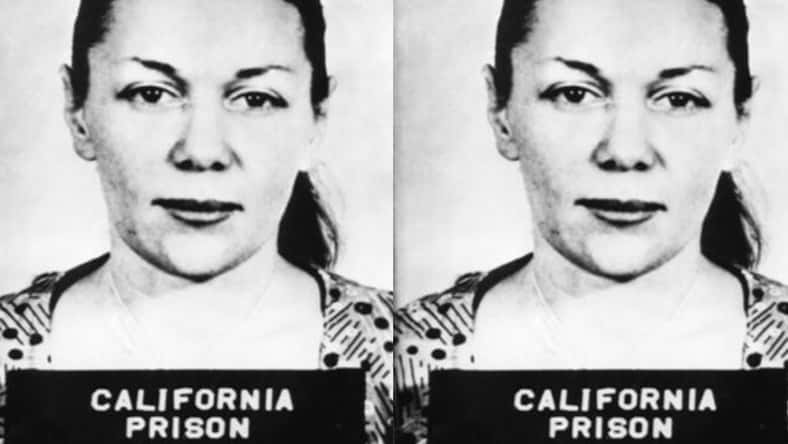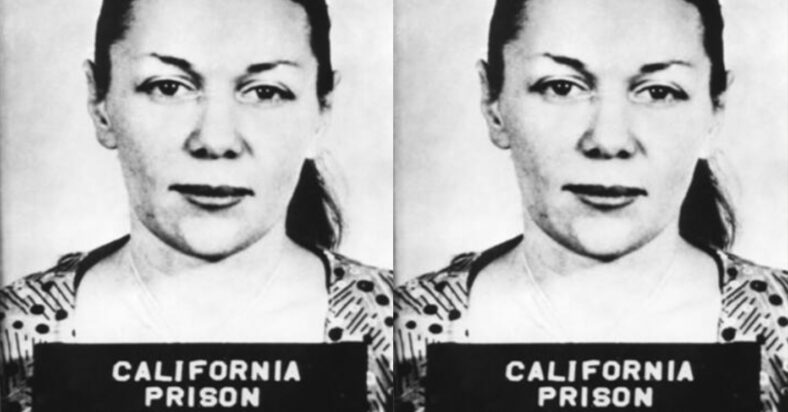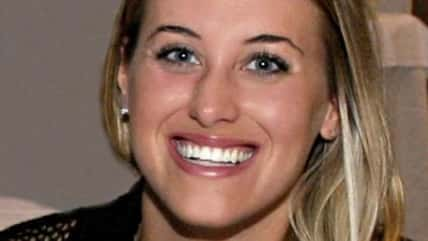She Was Nicknamed Bloody Babs, But Was She Wrongfully Executed?

In September 1953, Barbara Elaine Graham, who came to be known as “Bloody Babs,” was found guilty of the first-degree murder of an elderly widow after a robbery attempt went wrong. By June 1955, she became the third woman to be executed in the gas chamber in California.
Yet, according to former prosecutor Maria Clark, who penned the book “Trial by Ambush: Murder, Injustice, and the Truth About the Case of Barbara Graham,” the trial was not fair.
The Early Life Of “Bloody Babs”
When Barbara was born in Oakland, California, on June 26, 1923, her mother, Hortense Wood, was only a teenager. Then, Hortense was incarcerated in a reform school, and at just 2 years old, Barbara was forced into foster care.
She reportedly faced abuse and neglect. And even after her mother was released, Hortense wouldn’t take Barbara back, leaving her to be raised by extended family and strangers.
Barbara didn’t receive much formal education, either, and as a teenager, she wound up in the same reform school that her mother had been in. She was later released in 1939, at which point she tried to start fresh.
She married her husband, Harry Kielhamer, in 1940, and together, the pair welcomed two children into the world. But unfortunately, their union didn’t last long. They divorced in 1942, and Harry was awarded custody of their kids.
Barbara tied the knot twice more in the following years. Again, these relationships didn’t pan out, and during the mid-1940s, she began working the streets in order to support herself. Her charismatic personality and beauty made her appealing to many.
However, Barbara also got roped into the world of crime. First, she provided a false alibi for two criminals, which landed her a perjury charge and a five-year sentence behind bars. Later, she became involved in the murder of Mabel Monohan.

Sign up for Chip Chick’s newsletter and get stories like this delivered to your inbox.
A Botched Robbery Turned Murder
Once Barbara was released from her prison stint, she worked different jobs and moved between cities. She also stayed in touch with criminals and got married again in 1953 to Henry Graham, a bartender.
The pair had a child together, a son named Henry. Their life wasn’t idyllic, though. Rather, Henry was a small-time criminal who reportedly struggled with drug addiction.
It was via Harry that Barbara met his two friends, Jack Santo and Emmett Perkins. Both men had criminal records, and Emmett wound up telling Barbara about a 64-year-old Burbank, California, widow who supposedly had a lot of jewelry and cash in her home. The widow’s name was Mabel Monohan.
Mabel had been a vaudeville performer, and Luther B. Scherer, her former son-in-law, was a mob-connected millionaire who owned casinos. Mabel was left with the Burbank house after her daughter, Iris, divorced Luther, got remarried, and moved to New York.
It was said that Mabel and Luther remained quite close, too, which is how a dangerous rumor began to spread. Local criminals came to believe that he’d left $100,000 hidden inside a safe at the home, a sum that’d be roughly equivalent to over $1 million today.
This is what sparked the idea of robbing Mabel’s home. On March 8, 1953, Barbara had dinner with four men: Jack Santo, Emmett Perkins, John True, and Baxter Shorter. At first, Baxter, who was a safe-cracker, was against Barbara being involved, calling her a “dame.” Emmett changed his mind, saying that she was the only way they’d get Mabel to open her front door.
That’s precisely what happened. Barbara knocked on Mabel’s door on the night of March 9, 1953, claimed she was having car trouble, and asked to use the phone. After Mabel let Barbara inside, the group of men followed behind.
Baxter later said that, by the time he entered the house, Mabel was already gagged and bleeding. The group scoured Mabel’s house, searching for a safe, jewelry, or money, but they found nothing.
According to John, Barbara supposedly gave a gun to Emmett and instructed him to “knock her out.” Baxter alleged that he’d told John to remove the gag; John, on the other hand, stated that Barbara began to beat Mabel, and by the time they left, Jack assumed the widow was dead. Her gardener discovered her body two days later.
The Trial Of Barbara Graham
Mabel was found tied up, beaten, and asphyxiated. Barbara, along with Jack Santo and Emmett Perkins, went on trial for murder on August 18, 1953.
As soon as the case hit the press, news outlets honed in on Barbara, calling her “Bloody Babs” and portraying her as a beautiful yet cold-blooded killer.
During the trial, two specific events seemed to solidify Barbara’s fate. First, one accomplice was given immunity and testified that Barbara had actually attacked Mabel by herself before the rest of the group entered the Burbank residence. Secondly, an undercover officer testified that Barbara had asked him for a fake alibi.
This led the jury to find Barbara, as well as her co-defendants, guilty of first-degree murder in September 1953. They were all given death sentences, and Barbara was executed in the gas chamber at San Quentin Prison on June 3, 1955.
A Former Prosecutor’s Perspective
Marcia Clark, a former prosecutor and author, researched the events of Barbara’s murder trial, and in her book “Trial by Ambush: Murder, Injustice, and the Truth About the Case of Barbara Graham,” she claims it was unfair.
She discovered that the prosecution did not provide the defense with a statement from John True, who was an accomplice-turned-witness. According to Marcia, his original statement conflicted with the testimony he provided on the stand.
“He was such a key witness. There was no one else who could testify to what actually happened in [Mabel’s] house. For Barbara, in particular, that was critical because the story [John] told about what she did in the house, her being the one to pistol-whip the victim, was the only testimony that could make that claim,” Marcia detailed.
Marcia says this significantly influenced the trial. She thinks Barbara carried out her role as a lure, getting Mabel to open her front door, but did not pistol-whip the widow. Instead, Marcia believes Barbara never actually assaulted Mabel.
“[John] was lying from the start. Why he chose to nail Barbara, I think, was very simple. It was only he and she who were initially in the house, and Mabel had been beaten up for sure. If it wasn’t Barbara, it was him. He wasn’t going to get a deal if he was the one who admitted it,” Marcia stated.
“If [the defense] had been able to undermine his testimony, she wouldn’t have been executed. I feel very confident in saying the jury, had they known what I knew, would have never voted to put her to death.”
Another key detail of the case involved an undercover officer, Sam Sirianni, testifying that Barbara had offered to pay him for a fake alibi. Yet, the meeting between Barbara and Sam was set up by an inmate, Donna Prow, while Barbara was in jail.
Marcia claims that the police and the prosecution worked together, using Donna as an informant to pressure Barbara into asking for a false alibi. The police also removed Donna from jail as soon as Sam testified, so the defense couldn’t find her, meaning she couldn’t testify. If the jury heard from Donna, Marcia thinks Sam’s testimony wouldn’t have been so hard-hitting.
As for why the prosecution did this, Marcia argues that nailing “Bloody Babs” was a “notch in the belt.”
“Someone like Barbara, who is beautiful, and you don’t expect her to get sentenced to death, that is a big get. I think that notch in the belt was part of the motivation,” she concluded.
“You do want prosecutors to present a strong case, and you want them to present the evidence to convict the guilty. That is their job. But it is not their job to hide witnesses, to hide evidence in order to get a conviction, let alone the death penalty.”
More About:True Crime





